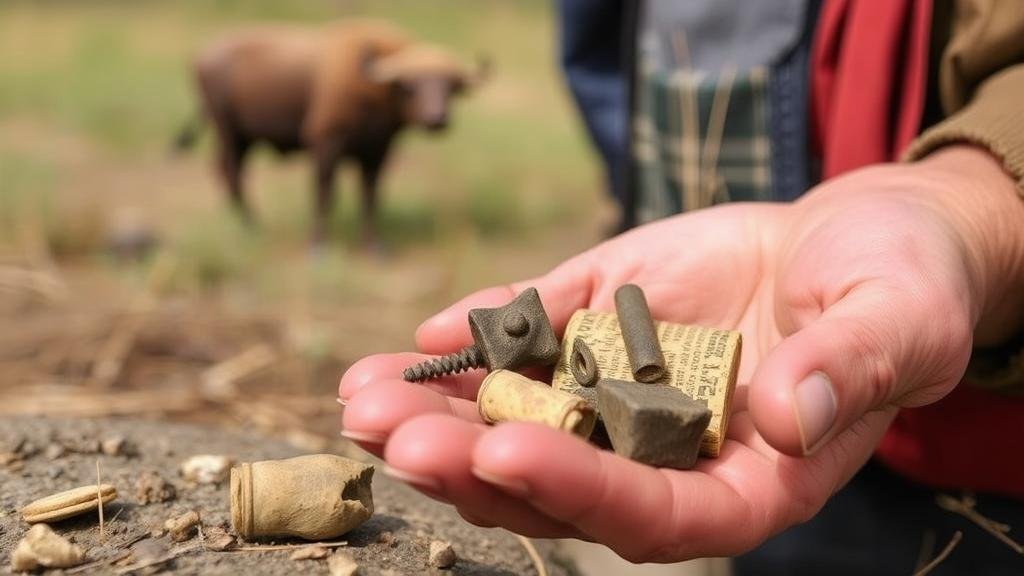Recovering Artifacts Near Known Buffalo Jumps and Kill Sites
Recovering Artifacts Near Known Buffalo Jumps and Kill Sites
The recovery of artifacts near known buffalo jumps and kill sites is a critical area of study within archaeology and anthropology. These sites offer a window into the past behaviors and practices of Indigenous peoples, particularly regarding their hunting strategies and cultural significance. This article will explore methodologies for artifact recovery, the types of artifacts typically found, and the cultural and historical contexts surrounding buffalo jumps and kill sites.
The Importance of Buffalo Jumps and Kill Sites
Buffalo jumps were strategic sites used by Indigenous peoples to facilitate large-scale buffalo hunts. e natural cliffs allowed hunters to drive herds of buffalo over steep ledges, a technique that resulted in significant quantities of meat and materials for survival. This method not only maximized hunting efficiency but also served as a communal activity that strengthened social bonds among tribes.
- Efficiency: The method employed at buffalo jumps allowed communities to secure extensive resources with minimal exertion.
- Cultural Significance: The collective nature of the hunt fostered a sense of community and identity among different Indigenous groups.
On the other hand, kill sites represent locations where buffalo were hunted using direct methods such as stalking or ambushing, often with the use of bows and arrows. Understanding the variations between buffalo jumps and kill sites can provide insights into the adaptive strategies employed by these communities.
Methodologies for Artifact Recovery
Recovering artifacts from buffalo jumps and kill sites requires a nuanced approach informed by both ethical considerations and scientific techniques. Here are some established methodologies:
- Geomorphological Surveys: Before excavation, geologists often conduct geomorphological surveys to understand the landscapes formation. This helps identify potential locations for artifact recovery.
- Systematic Excavation: Archaeologists typically employ stratified sampling techniques, digging in controlled sections to ensure accurate contextual information about artifact placement and preservation.
- Dating Techniques: Artifacts recovered from these sites are often dated using radiocarbon dating or optically stimulated luminescence (OSL) methods, which provide information on the timeline of usage and occupation.
Each of these methodologies contributes to a comprehensive understanding of past human behavior and interaction with the environment.
Types of Artifacts Found
Artifacts recovered from buffalo jumps and kill sites can vary widely, offering insights into the technological and cultural practices of Indigenous peoples. Common artifact types include:
- Tools and Weaponry: Flint tools, projectile points, and other weaponry are often discovered, indicating the technological advancements in hunting.
- Bone Fragments: Remnants of buffalo bones, including skeletal remains, provide evidence of butchering practices and dietary habits.
- Artifacts of Ritualistic Significance: Items such as ceremonial tools or personal adornments can reveal aspects of the spiritual life of the people.
For example, the Blackfoot Nation has frequently used buffalo jumps not only for hunting but also as sites of cultural storytelling and ritual, and artifacts found in these areas illuminate their complex relationship with the buffalo.
Cultural and Ethical Considerations
When recovering artifacts near buffalo jumps and kill sites, cultural sensitivities must be recognized. Many of these sites hold significant spiritual and historical meaning for Indigenous communities. Collaboration with Native American tribes is essential in ensuring ethical practices in archaeological endeavors.
- Respect for Traditional Knowledge: Engaging with Indigenous knowledge keepers can enrich the understanding of the artifacts and their significance.
- Protection of Sites: Legal protections are often established to prevent unauthorized excavations and to preserve the integrity of these culturally significant sites.
By fostering collaborative environments between archaeologists and Indigenous peoples, the recovery process can honor the past while also informing present and future generations.
Real-World Applications and Case Studies
Numerous case studies illustrate the importance of good practices in recovering artifacts from buffalo jumps and kill sites. For example, the Head-Smashed-In Buffalo Jump in Alberta, Canada, is a UNESCO World Heritage site that has undergone extensive archaeological research. This site has yielded thousands of artifacts, from stone tools to buffalo bones, which help illustrate the continuity of Indigenous hunting practices over thousands of years.
Also, ongoing excavations at the site have highlighted the need for integrating modern technology such as Geographic Information Systems (GIS) for mapping artifact locations and patterns, improving the understanding of how the buffalo jump was utilized over generations.
Actionable Takeaways
For researchers, archaeologists, and Indigenous communities, there are several critical takeaways regarding the recovery of artifacts near known buffalo jumps and kill sites:
- Engage in collaborative practices with Indigenous peoples to ensure ethical recovery and preservation of artifacts.
- Use modern technology for more efficient surveys and recoveries, enhancing the understanding of archaeological contexts.
- Advocate for the protection of culturally significant sites to maintain their integrity for future generations.
Understanding and recovering artifacts from buffalo jumps and kill sites not only preserves history but also honors the cultural legacies of Indigenous peoples in North America.



